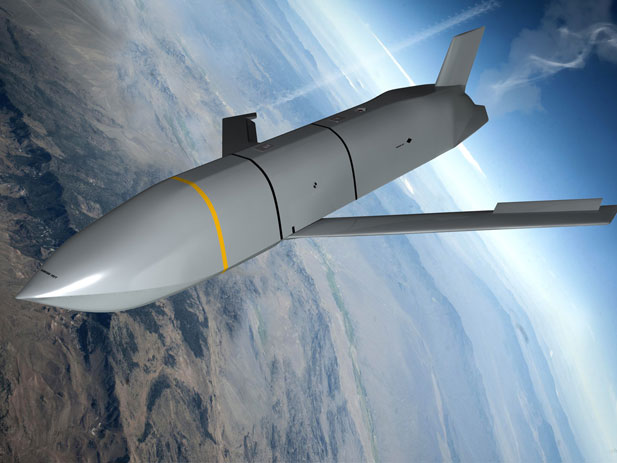
Air Weapons (Smart Bombs and Missiles): Customized For F-35A

Japan has ordered AGM-158B JASSM ER (extended range of 900 kilometers) gliding smart bombs for its F-15 fighter-bombers.
These cost $1.15 million each and will be delivered by 2020. Since it entered production in 2009 over 3,000 JASSM have been ordered, including 910 of JASSM ER. Basically, JASSM delivers a GPS guided bomb long distances (beyond the range of enemy air defenses) and does it relatively inexpensively. Production of JASSM has increased quite a bit lately as more orders from American and South Korean air forces recently were placed. Now Japan is added to the list.
In addition, Japan recently confirmed the purchase of the Norwegian "Joint Strike Missile" (JSM) for its F-35A fighters. Norwegian defense firm Kongsberg has been developing JSM since 2011 as an air-to-surface weapon that is not only stealthy but also designed to be launched from the internal bomb bay of the F-35 (where two can be carried). To fit into the F-35A internal bomb bay the existing JSM had to be reduced in size and that was completed in 2018. The F-35 version is a 310 kg (670 pound) missile with a 185-550 kilometer range (depending on launch altitude). All JSM versions are based on the existing Kongsberg NSM (Naval Strike Missile). That means JSM has capabilities like two-way communication, image recognition for homing in on a specific target and the ability to fly very low and take advantage of local terrain to evade detection and interception. JSM is basically a small cruise missile using a small jet engine and pop-out wings to keep itself moving.
Adapting this weapon for air launch got American manufacturers and the U.S. Department of Defense involved and soon Kongsberg had made deals for integrating the JSM with the still evolving fire-control software of the F-35 as well as a U.S. partner to manufacture JSM for American users. JSM uses the NSM guidance system to hit moving targets, like ships as well as very small targets on land. Japan wants JSM because that missile would be perfect for a Japanese F-35 making a surprise attack on North Korean missile or nuclear weapons facilities.
JSM is based on the older, and quite successful, NSM. This is 410 kg (900 pound) missile is designed for use from ships or land based launchers (or trucks). NSM has a 125 kg (275 pound) warhead and a range of 185 kilometers. NSM uses GPS and inertial guidance systems, as well as heat imaging system (and a database of likely targets) for picking out and hitting the intended target. NSM entered service in 2007 and work on an air-launched version led to the JSM. A major chore was the JSM's advanced electronics (especially the gear that defeats defensive jammers) and this stuff required a lot of tweaking and realistic testing. That was expected and the JSM was ready for service on schedule.
Other nations see the JSM as more useful against naval targets or even specific vehicles moving along a distant road. The JSM thus becomes a very useful weapon for nations adopting the F-35. The JSM is also superior to the heavier Harpoon, which has become a standard anti-ship missile in many navies. The JSM has other competition, like the Harpoon variant, SLAM-ER, but at the moment no one weapon has a lock on future anti-ship missiles or the kind of versatile air-to-ground missile JSM has indeed evolved into. JSM completed its final tests in July 2018 and will be available for adaptation (software mods) for F-35 users as they receive their aircraft. Each nation will have the F-35 fire control system (as well as some of the other electronics) modified to handle local preferences, especially when it comes to specific bombs and missiles and other unique bits of hardware.
The F-35 is armed with an internal 25mm cannon and four internal air-to-air missiles (or two missiles and two smart bombs) plus four external smart bombs and two missiles. A special bomb rack was developed which allowed the F-35 to carry eight SDBs (230 kg Small Diameter Bombs). All sensors are carried internally and max weapon load is 6.8 tons. The aircraft is very stealthy when just carrying internal weapons. The more compact (it looks like a missile) SDB was designed with the internal bomb bays of the F-22 and F-35 in mind and has proved to be a very effective smart bomb.
JSM is also being adapted for use on other aircraft, especially the F-16, F-15E and F-18, which would carry it externally. The F-35 can also carry JSM (and all other bombs and missiles) externally but sacrifices a lot of its stealth protection to do so. Japan may not consider this to be a major problem with North Korea, which has an antiquated air-defense system. The official reason for arming Japanese F-35s with JSM is to deal with the threat of ballistic missile attack by North Korea. JSM is well suited to find and destroy hidden North Korea missile launch sites. But JSM would also be an excellent weapon to use against Chinese warships, which Japan does not mention but is implied.
Photo: Japan Air Force AGM-158B JASSM ER (Photo by www.artstation.com) Naomi A.J. Takahashi (JAPAN XAIRFORCES Editor)
naomitakahashi@yandex.com
Facebook.com/lockheed.lightning
Twitter.com/LLightning2
(5.11.2018)
|